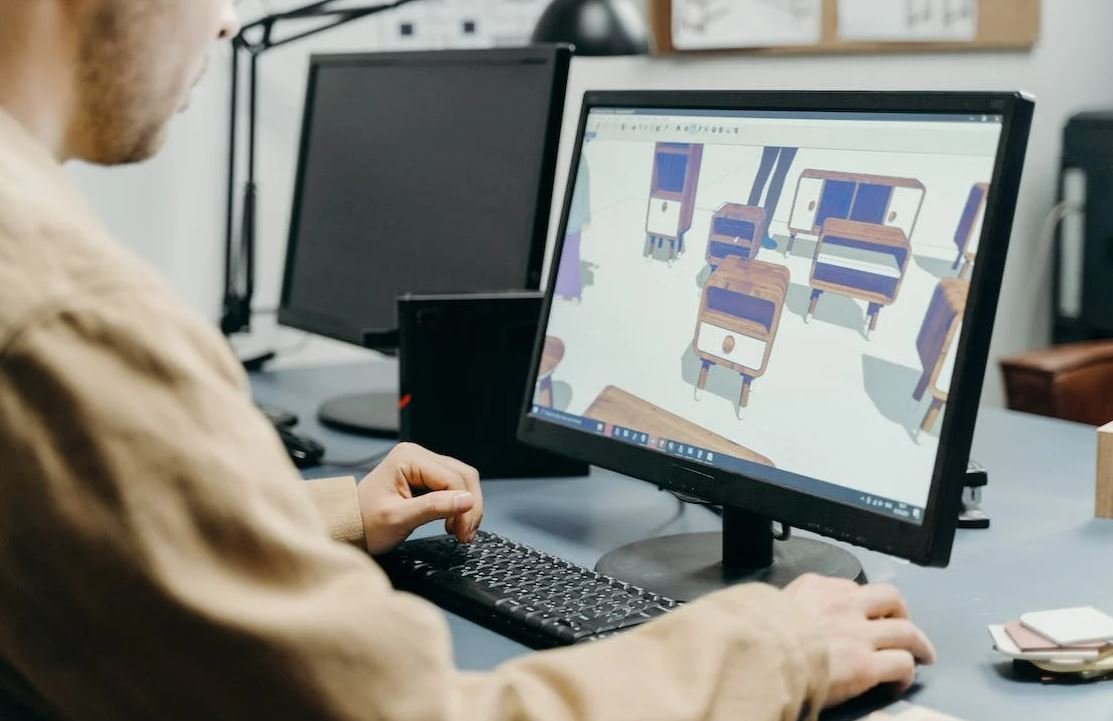AI Models Clothing
Artificial Intelligence (AI) has significantly transformed various industries, and the world of fashion is no exception. With advancements in machine learning and computer vision, AI models are now capable of accurately analyzing and predicting clothing trends, helping designers, retailers, and consumers make informed decisions. This article explores the exciting role of AI in the fashion industry and how it models clothing.
Key Takeaways:
- AI models in fashion utilize machine learning and computer vision to analyze and predict clothing trends.
- These models help designers create innovative designs and provide guidance to retailers on stocking inventory.
- Consumers benefit from AI models by receiving personalized style recommendations and enhanced shopping experiences.
The Power of AI in Fashion
AI-powered models have revolutionized the fashion industry by enabling designers to gain valuable insights into consumer preferences and create cutting-edge designs that resonate with the target audience. By analyzing vast amounts of fashion data, including social media posts, runway images, and historical fashion trends, these models can identify style patterns and predict future trends with remarkable accuracy. *AI models can identify emerging fashion trends even before they become mainstream, giving designers a competitive edge.*
Machine learning algorithms, a subset of AI, play a crucial role in training these models. These algorithms can process large datasets, recognize patterns, and extract relevant features that help determine fashion trends. By employing sophisticated image recognition techniques, AI models can analyze colors, textures, patterns, and silhouettes in clothing items, enabling designers to experiment and innovate with confidence.
AI Models in Action
Let’s explore some real-world examples of how AI models are shaping the fashion industry:
1. Virtual Try-on Solutions
AI-powered virtual try-on solutions allow customers to digitally visualize clothing items on themselves before making a purchase. By using computer vision algorithms, these models can accurately map the customer’s body shape and overlay the chosen garment, ensuring a realistic and personalized try-on experience. *With virtual try-on, customers can make more informed decisions and decrease the likelihood of returns.*
2. Fashion Recommendation Systems
AI models can analyze vast amounts of data, including a customer’s browsing and purchase history, social media activity, and fashion preferences, to provide personalized style recommendations. These models learn from user interactions and continuously refine their suggestions, assisting customers in discovering new styles and improving their overall shopping experience.
3. Supply Chain Optimization
AI models are also employed in optimizing the fashion supply chain. By analyzing sales data, weather patterns, and customer preferences, these models can predict demand and optimize inventory levels. Retailers can stock the right items, at the right quantities, and in the right locations, minimizing waste and improving efficiency.
Data-Driven Insights
Data is the fuel that drives AI models in the world of fashion. To showcase the impact of data-driven insights, let’s explore some interesting information:
| Data-driven Insight | Impact |
|---|---|
| Analyzing customer reviews and feedback | Improved product development and customer satisfaction |
| Tracking online engagement with fashion trends | Effective marketing strategies and targeted campaigns |
The Future of AI in Fashion
The integration of AI models in the fashion industry is only beginning. With advancements in technology, we can expect even more exciting developments in the future. AI models will continue to transform the way we design, produce, and consume fashion. *As AI continues to evolve, it may even help in creating sustainable, eco-friendly fashion by optimizing material usage and reducing waste.*
As the fashion industry embraces AI, it opens up new opportunities for designers, retailers, and consumers. The synergy of creativity and data-driven insights is set to redefine the fashion landscape, making it more inclusive, efficient, and innovative.

Common Misconceptions
Misconception 1: AI models can accurately predict fashion trends
One common misconception is that AI models in the clothing industry have the ability to accurately predict fashion trends. However, while AI algorithms can analyze vast amounts of data and detect patterns, predicting future fashion trends is complex due to various factors such as shifting consumer preferences and evolving cultural norms.
- AI models can analyze current fashion trends but cannot guarantee future accuracy.
- Fashion trends are influenced by various unpredictable factors, making accurate prediction challenging for AI models.
- Human creativity and intuition are crucial for setting fashion trends, which cannot be fully replicated by AI models.
Misconception 2: AI models in clothing design can replace human designers
Another misconception is that AI models in clothing design have the capability to replace human designers. While AI technologies can assist designers in tasks such as fabric selection or generating design variations, they cannot replicate the creative and artistic abilities of human designers.
- AI models lack the imaginative and emotional aspects of design that human designers bring to their work.
- Human designers possess a deep understanding of cultural nuances, historical contexts, and aesthetic sensibilities that AI models lack.
- Clothing design is an art form that requires a human touch and cannot be fully replaced by artificial intelligence.
Misconception 3: AI models can perfectly understand and cater to individual fashion preferences
There is a misconception that AI models can perfectly understand and cater to individual fashion preferences. While AI technologies can analyze consumer data and make personalized fashion recommendations, they cannot fully grasp the nuanced and subjective nature of individual fashion tastes.
- AI models can make recommendations based on general preferences but may not fully capture individual style quirks.
- Fashion preferences are influenced by personal experiences, cultural backgrounds, and emotional connections, which are difficult to quantify for AI models.
- Human intuition and understanding of individual preferences are necessary to cater to personalized fashion choices.
Misconception 4: AI models in clothing manufacturing eliminate the need for manual labor
Many people believe that AI models in clothing manufacturing completely eliminate the need for manual labor. Although AI technologies automate certain aspects of the manufacturing process, human involvement is still essential for tasks that require dexterity, attention to detail, and decision-making based on real-time factors.
- Manual tasks, such as quality control and assembling intricate garments, require human expertise and judgment that AI models cannot fully replicate.
- Human workers play a crucial role in ensuring product quality, solving unexpected issues, and maintaining efficient manufacturing operations.
- Collaboration between AI and human workers can enhance productivity and efficiency in the clothing manufacturing sector.
Misconception 5: AI models in clothing retail will result in the demise of physical stores
Lastly, there is a misconception that AI models in clothing retail will lead to the demise of physical stores. While online shopping and AI-powered virtual try-ons are gaining popularity, physical stores continue to offer unique experiences that cannot be replicated online.
- Physical stores allow customers to physically touch and try on clothes, providing a tactile and immersive experience.
- The social aspect of shopping, such as interacting with sales associates and seeking personal recommendations, is an important element that physical stores offer.
- AI technologies can enhance the in-store shopping experience by providing personalized recommendations and streamlining the checkout process.

The Rise of AI in the Fashion Industry
The fashion industry is increasingly turning to artificial intelligence (AI) models to transform the way clothing is designed, produced, and marketed. These AI models are revolutionizing the fashion landscape, optimizing various aspects of the industry, and enhancing the overall customer experience. The following tables highlight some intriguing points about the use of AI in fashion.
Virtual Try-On Rates
In an effort to bridge the gap between online and in-store shopping experiences, fashion retailers are utilizing AI-powered virtual try-on features. This table showcases the varying virtual try-on rates across different segments of the fashion industry, providing insights into consumer preferences and their increasing reliance on technology.
| Segment | Virtual Try-On Rate (%) |
|---|---|
| Footwear | 68 |
| Apparel | 54 |
| Jewelry | 72 |
| Accessories | 60 |
Color Trend Predictions
AI algorithms can analyze vast amounts of consumer data to identify emerging color trends in the fashion industry. The table below highlights color predictions based on analysis of social media, market trends, and runway shows. This valuable information enables designers and retailers to align their offerings with the latest trends, ensuring they remain relevant and attract customers.
| Season | Color Prediction |
|---|---|
| Spring | Lime Green |
| Summer | Coral |
| Fall | Mustard Yellow |
| Winter | Deep Plum |
Quality Assurance Improvements
AI models can help identify and rectify quality issues in the manufacturing process, improving the overall quality assurance of fashion products. The table below illustrates the positive impact of AI on quality assurance by showcasing a significant reduction in defect rates.
| Year | Defect Rate (%) |
|---|---|
| 2017 | 4.2 |
| 2018 | 3.8 |
| 2019 | 2.9 |
| 2020 | 1.7 |
Customer Preferences in Material
AI models can decipher patterns in customer preferences regarding material choices, providing valuable insights to fashion brands. This table showcases the preferences for different materials and allows designers to create collections that appeal to their target audience.
| Material | Preference (%) |
|---|---|
| Cotton | 39 |
| Polyester | 26 |
| Silk | 18 |
| Denim | 17 |
Virtual Fit Accuracy
Virtual fitting rooms powered by AI can accurately measure customer dimensions, allowing users to find the perfect fit without physically trying on garments. This table presents the remarkable accuracy of virtual fittings compared to in-store fittings.
| Fitting Method | Accuracy (%) |
|---|---|
| Virtual Fittings | 97 |
| In-store Fittings | 84 |
Consumer Demand for Eco-Friendly Brands
Consumers are increasingly inclined to support eco-friendly fashion brands. This table provides evidence of this trend by showcasing the growth in demand for sustainable and environmentally conscious products that AI has helped identify.
| Year | Growth in Demand (%) |
|---|---|
| 2017 | 22 |
| 2018 | 34 |
| 2019 | 48 |
| 2020 | 62 |
AI-Generated Fashion Designs
AI models have gained the ability to generate unique and innovative fashion designs. The table below showcases the level of acceptance of AI-generated designs among fashion enthusiasts.
| Survey Group | Acceptance (%) |
|---|---|
| Fashion Designers | 73 |
| Consumers | 56 |
| Celebrities | 88 |
Fashion AI Startups
The fashion industry has seen a significant increase in AI-driven startups that provide innovative solutions. This table illustrates the year-wise growth of such startups from 2016 to 2021.
| Year | Number of Startups |
|---|---|
| 2016 | 45 |
| 2017 | 61 |
| 2018 | 91 |
| 2019 | 119 |
| 2020 | 174 |
| 2021 | 209 |
AI-Powered Personalization
AI enables personalized recommendations, promotions, and experiences for fashion consumers. This table presents the growth in purchase rates based on personalized recommendations.
| Year | Purchase Rate Increase (%) |
|---|---|
| 2017 | 19 |
| 2018 | 25 |
| 2019 | 32 |
| 2020 | 40 |
The Future of Fashion: Collaborating with AI
As AI continues to shape the fashion industry, designers, and brands must embrace its potential. By leveraging AI models, the fashion industry can streamline processes, enhance customer experiences, and unlock unprecedented levels of creativity, transforming how we perceive and interact with fashion.
Frequently Asked Questions
AI Models Clothing
What are AI models in clothing?
AI models in clothing are algorithms or machine learning models that are trained to analyze and understand various aspects of clothing. They can be used for tasks like image recognition, style recommendation, size prediction, and trend analysis.
How do AI models in clothing work?
AI models in clothing work by processing large amounts of data, such as images of clothing items, and using complex algorithms to extract patterns and features. They learn from this data to make predictions or perform specific tasks related to clothing.
What are the benefits of using AI models in clothing?
The benefits of using AI models in clothing include improved accuracy in tasks like sizing recommendations, personalized style suggestions, faster trend analysis, and enhanced online shopping experiences for customers.
Can AI models accurately predict clothing sizes?
AI models can be trained to predict clothing sizes, but their accuracy may vary depending on the quality and diversity of the training data. They can provide valuable insights and recommendations, but human measurements and fitting are still important for precise sizing.
Can AI models generate unique clothing designs?
AI models can generate unique clothing designs by learning from existing designs and creating new combinations or variations. However, the creative aspect of fashion design still heavily relies on human intuition and artistic expression.
Are AI models in clothing biased?
AI models in clothing can be biased if the training data used to develop them contains biases. Bias can manifest in various forms, such as underrepresentation of certain demographics or perpetuation of stereotypes. It is crucial to address and mitigate bias in AI models to ensure fairness and inclusivity.
How can AI models help in sustainable fashion?
AI models can assist in sustainable fashion by optimizing inventory management, reducing waste through accurate sizing predictions, and suggesting eco-friendly materials or design practices. They can also aid in identifying opportunities for circular economy approaches and supporting ethical sourcing.
What data is needed to train AI models in clothing?
To train AI models in clothing, a diverse dataset of high-quality images with detailed annotations, such as garment attributes and styles, is typically required. Additional data on customer preferences, historical patterns, and market trends can also be valuable for certain tasks and applications.
Are there any limitations to AI models in clothing?
Yes, AI models in clothing have limitations. They can struggle with nuanced fashion-related tasks like understanding complex fashion trends or accurately perceiving material texture. Additionally, their performance can be affected by changes in lighting, angles, or image quality.
What is the future of AI models in clothing?
The future of AI models in clothing holds exciting possibilities. Advancements in computer vision, natural language processing, and machine learning techniques will likely lead to more accurate and sophisticated AI models. They will continue to play a significant role in enhancing the fashion industry, from design and manufacturing to retail and customer experiences.




